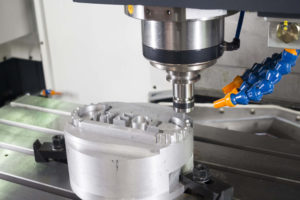At the heart of industrial manufacturing is metal fabrication, which contributes to countless types of machinery and steel structures. The machine that has made metal fabrication a much more efficient industry today than most of last century is the laser cutter. Here are essential reasons why lasers are embraced by manufacturers that use metal as a principle material.
Common Metal Fabrication Processes
- cutting, drilling and machining
- folding metal
- punching, stamping and die casting
- welding metal together
- shearing
Drilling Holes in Metal
Hand drills are still useful for various applications, especially for home renovation. But when it comes to mass manufacturing, you need to work with machines that get the job done in lightning speed with high precision. There’s not much room for error in today’s competitive business environment, as unsatisfactory production simply doesn’t “cut it” anymore. Laser cutters are the solution that outperform other cutting machines on almost every level.
Not only can laser cutters drill holes more accurately and quickly than other cutting devices, they provide a cost-effective solution for mass production. Since they are computer-based, they also allow for automated cuts and drilling. First you design a product in CAD software then you program the machine to make precise cuts in the pattern based on X,Y and sometimes Z coordinates.
Efficient Use of Sheet Metal
Another attraction to laser cutting for metal fabrication is that it’s a much more eco-friendly process than traditional cutting methods. Since lasers cut so finely and precisely, they generate minimal waste. But even metal scraps can be used for recycling, especially for aluminum or steel. Less wasted material also means getting the most financial benefit out of metal costs.
Sheet metal is used widely by fabricators due to its light weight and flexibility that allows it to be cut into any imaginable shape. Thickness or gauge of metal determines what type of laser cutter is most appropriate for a given project. The most widely used types of sheet metal are stainless steel, aluminum and alloys such as brass.
Punching and Stamping
Two widely used processes for metal fabrication are punching and stamping. They are both somewhat similar in concept to how a traditional printing press works. A punch applies pressure to a die, which is a mold of the product. Traditionally it was a manual process using a press, but now it’s commonly done much more quickly and accurately by a CNC machine. It’s an excellent way to make tools.
Custom metal stamping encompasses a broader array of processes for cutting shapes including embossing, bending and coining. Once again, CNC machines are commonly used for this process due to precision and reliable high speed production.
Conclusion
Metal fabrication using laser cutters has become a key to modern industrial solutions for structural and equipment manufacturing. Contact us at Serra Laser & Waterjet for more information on the most efficient ways to cut various types of metals.

